Audio discussion forums are like if there existed forums about outer space with contributions from both astronomy and astrology enthusiasts. Astronomy people interested in empirical facts about planets and stars would have to constantly counter specious claims about celestial events influencing our personalities and mundane earthly events. Real life audio forums are full of bickering between individuals convinced they easily hear differences amongst exotic cables/electronics that could not be remotely audible and those of us educated in basic facts that have been well known to scientists and engineers for decades. This can be confusing for individuals seeking credible information on how to use the increasingly sophisticated tools available to us to maximize the sound quality of the music we love. For myself and many others, this music is a significant part of what gives our lives meaning, so sound quality in my view is no trivial issue.
The controversies addressed here go beyond what I covered in my first article six years ago. In my experience, they are amongst the most contentious issues debated in audio forums, and sorting fact from fiction was not easy. A few I changed my mind on relatively recently. I don’t claim to be an expert, and I’m not an engineer. However, I have spent a tremendous amount of time seeking out information from legitimate engineers and audio experts, and I feel all I say here is on solid ground, though as always I am open to evidence that suggests I’m mistaken.
1. 320 kbps compression is not audibly different from lossless CD quality. Forums are full of those who emphatically claim they can easily tell the “night and day” differences between lossless and 320 kbps. In my experience almost none of these individuals have attempted a level-matched double blind test, where they will inevitably find differences are difficult (or impossible) to discern, maybe more like listening for a fly over a jackhammer. In 2020, there isn’t difference between the paid version of Spotify and other popular streaming services with respect to sound quality, which are all basically equivalent to lossless CD, i.e. as good as it gets.
2. Accuracy is not inherently sterile or boring. First ask yourself, what does accuracy mean? For a TV, it means that colors (and other objective measures) are as the director/cinematographer intended. Similarly, in audio accuracy (or fidelity) means the decisions made by the musicians and engineers are replicated in your home as closely as possible. (Whether what’s on the recording sounds like an actual instrument is completely beyond the listener’s control.) Unsurprisingly, methodical double blind tests indicate that accuracy is preferred by the vast majority of even untrained listeners. It doesn’t mean that there’s not room for preference, like running subs a bit hot (as I do), but a baseline of accuracy is highly desirable before introducing personal preference.
3. Passive bi-amping (“fool’s bi-amping”) does nothing to improve sound quality. Not hard to recognize bi-wiring (“buy-wiring”) as an obvious scam, but many remain confused about passive bi-amping. Manufacturers perpetuate this confusion by putting separate binding posts for tweeters and woofer, which encourages the delusion that to get the most from their speakers one must buy another amplifier. The reality is that sending two full range signals to the passive crossover internal to the speaker does nothing to increase headroom or provide any sonic advantage whatsoever. Active bi-amping with an active crossover, on the other hand, can be advantageous, though to do this with a typical passive speaker requires disabling internal crossover and is best not tried by those without technical knowledge. The easiest way to get the sonic benefits of bi-amping is to buy powered speakers or a powered subwoofer (or tri-amp with both).
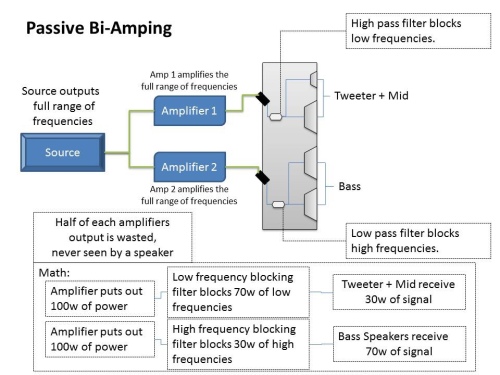
(Sorry, image source unknown)
4. Quality ported subwoofers are just as “musical” as sealed. There may have been some truth to the idea that at one time sealed subwoofers had sonic advantages to ported since they are easier to design. However, in our age of computer simulations and digital signal processing, ported subs will typically offer better performance for both music and movies. The reason for buying a sealed sub has more to do with the typically smaller footprint.
5. Isolation or decoupling products do nothing to improve sound quality. Expensive products that claim audible improvement are scams. Sound from a speaker is transmitted through the air, not the cabinet. Instead, concentrate on proper speaker placement.
- Testing Loudspeaker Isolation Products @ Ethan Winer
- Do I Need to Isolate My Subs @ Bill Fitzmaurice
6. There is nothing wrong with putting speakers next to wall opposite listening positions. No “room to breath” required. Against front wall may in fact be optimal position. The energy is going out into the room, and putting speakers next to front wall can actually minimize distortions to bass (SBIR). (Only a few inches is necessary to accommodate back ported speakers.) You should, however, avoid putting speakers too close to sidewalls if possible, and especially avoid putting listening positions too close to side or back walls.
7. How much money you spent on your sound system says nothing meaningful about how good it sounds. All the time on forums people throw out dollar amounts like they are directly related to sound quality. The fact is that there is little correlation between price and sound quality past a fairly basic level. Audio products sold as luxury items may be beautiful, but how much they cost typically has more to do with marketing. Price in our modern world frequently is dictated more by economy of scale than anything else, and larger companies mostly offer a better value than boutique speaker companies. These same larger manufacturers can oftentimes spend a heck of a lot more on things that really matter like engineering and research.
8. Powered speakers are generally fine for home listening. There’s an audiophile prejudice against powered speakers that is as wrong as the vast majority of other audiophile prejudices. As mentioned above, powered speakers have an inherent sonic advantage due to their active crossovers. Many claim these speakers are not suited for anything but near-field listening of a few feet, but I’ve never seen actual evidence of this. My experience is that they are more than OK for a typical room. The only disadvantage is that since they are sold as tools rather than luxury items they may be too ugly for many living rooms. One must also run power to every speaker, and if one uses an AVR, it will be necessary to buy a more expensive model with pre-outs.
9. Multi-channel can improve realism of music. Yes, we have two ears, but we hear in three dimensions. If one goes to an acoustic concert space, one is immersed in the sound that is reverberating around the room. The massive ceiling of a cathedral appropriate for a baroque choir must be doing something useful. Ceiling speakers (like in Dolby Atmos) can recreate these reverberations in our homes. Of course the vast majority of recorded music was designed by the engineers to be played back in two channel stereo, and I personally find most rock and jazz sounds a bit funny in multichannel, though personally I love to upmix (as most AVRs can do) classical music to get closer to that feeling of being in a reverberant concert hall.

10. Yes, we all hear differently, but accuracy still matters. It is frequently claimed that because everyone hears with a different frequency response (the main property that gives sound its character) that preferences matter above all else. But however we hear becomes our anchor to reality. If we hear a violin with our own unique frequency response our entire life, normalizing that frequency response will likely create a very funky violin sound that will likely sound worse. There are even some headphones out there that claim to account for abnormalities in our hearing. From what I understand, there is little evidence that these kinds of products actually increased perceived sound quality, unless we are talking about accounting for legitimate hearing deficiencies.
11. Vintage audio products are more often worse than better. Audio products are generally much better with respect to sound quality than in decades past, despite what is frequently claimed by vintage enthusiasts. It is generally true that all consumer goods improve in most every way measurable as science and engineering progresses. They become more reliable, more effective, more efficient, and cheaper. This is certainly true for audio. How they don’t necessarily improve is in non-measurable aesthetic qualities. In the 50s, even home appliances like toasters looked like beautiful works of art, and certainly audio products of yesterday were in many ways aesthetically more beautiful, which is really what vintage enthusiasts are responding to, whether for audio products or cars.
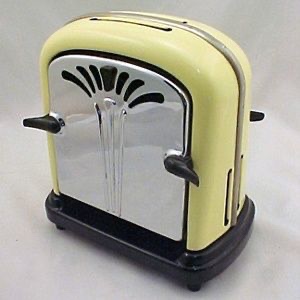
12. Clipping is not inherently damaging to speakers. If it was, rock ‘n’ roll would not exist. Speakers are damaged by turning the volume up too loud or using them too long, basically as one would intuitively expect. There is nothing inherently dangerous about under-powering speakers, as much as this myth is loved by amplifier salesmen. Also, clipping does NOT produce DC current, as many emphatically claim.
13. While most movies are intended to be heard in multichannel and most music two channel, there is no inherent difference otherwise. Music does not require special speakers or amplifiers that are “musical.” Accuracy is accuracy, and besides, music is actually a highly important part of film. There’s a heck of a lot of low frequency content in both, and subwoofers are generally desirable for both.
14. CD rot is a myth. At least if cared for in a reasonable fashion. As difficult as it is to prove a negative, no legitimate evidence exists describing this phenomenon, which is frequently trotted out by those purporting the superiority of vinyl.
15. Class AB amplifiers are NOT sonically superior to class D (which does not stand for digital). While all designs have pluses and minuses in terms of reliability and price, all competent amplifiers (flat frequency response and low distortion) will sound the same regardless of class. Facts don’t care about your feelings (or how much you paid for that exotic amplifier).
SEE ALSO:
Filed under: Uncategorized | Leave a Comment
…Or What I Wish I’d Known about What Does Make a Difference in Home Audio
A year ago I wrote a blog post detailing what I wish I’d understood about audio when first becoming obsessed with this stuff. This article has been shared vastly more times than anything else I’ve written, and I admit it gives me satisfaction to see that on certain days there has been tens of thousands of views. On Facebook and Reddit there has been page after page of vitriolic debate concerning my article, which I generally find amusing to read.
When digesting some of the online discussion of my blog, there is one criticism that does sting a little: The accusation that people like me think that nothing in audio makes a difference. They suppose that since we generally don’t believe in sonic differences in speaker wire or modern amplifiers then we must just think everything sounds the same. They presume this is because we can’t hear sufficiently or we don’t really love music or we haven’t yet spent X dollars on our stereo systems.
I’ve personally found the exact opposite to be true, and when I started following the advice of legitimate audio experts, I found there are many upgrades or tweaks that have brought about massive sonic improvements in my own system. What’s more, these upgrades don’t involve purchasing expensive boutique speakers or retro tube amps, and without exception they are affordable to most any sufficiently motivated working-class person. I am forever grateful to these individuals for setting me on the right path, as there are few things in my life that provide me with more pleasure than listening to music in my own home. The 21st century is an amazing time to be a music lover, and as with phones or vacuum cleaners or any other electronic product, audio gear is getting cheaper and more effective all the time. I can think of few “come to Jesus” moments more significant in my life than first dialing in a subwoofer or putting up acoustic panels.
When I was wasting my family’s money on upgrading to “audiophile” interconnects and amplifiers, some part of me knew what I was doing was pointless. But then I thought, how could these editors of Stereophile be so wrong about everything? These guys are the experts, right? And Miles is sounding pretty effing good tonight, maybe bi-wiring does make a difference…. If I hadn’t found another path I can only imagine that I’d have either lost interest in audio, or worse, bought something on the Class A list of Stereophile recommended components.
The following list is roughly in the order of what I’ve personally found makes the most difference in sound quality. Though I believe that everything on this list is a rough reflection of best practices promoted by legitimate experts, as they say on audio discussion forums, YMMV:
1. A subwoofer is the cornerstone of a modern stereo system. Compared to even top-of-the-line full range speakers, decent subwoofers can reproduce the lowest frequencies found in both music and film more accurately, louder with less distortion, and for a whole lot less money. Since stereo imaging is not important for the lowest frequencies, the subwoofer can be placed where the bass is most accurate given the acoustics of a particular room. And because a subwoofer relieves the mains from having to reproduce the most difficult lowest frequencies, even the midrange can improve when a subwoofer is used.
It would not be unreasonable to spend 50% of more of one’s audio budget on subwoofers. These lowest frequencies might seem to be a relatively small part of music, but they are the most difficult to reproduce properly, and a big subwoofer with a powerful amplifier is the right tool for the job. For most users best results are achieved using a receiver with bass management features. Proper calibration is essential.
- Audioholics subwoofer articles
- Big Daddy’s Guide to Bass Management / Guide to Subwoofers
- The Schroeder Frequency: A Show and Tell
- How to Setup Your Studio / Critical Listening Room
- Bass Integration Guide
- How to Choose a Subwoofer for Surround Sound of Stereo
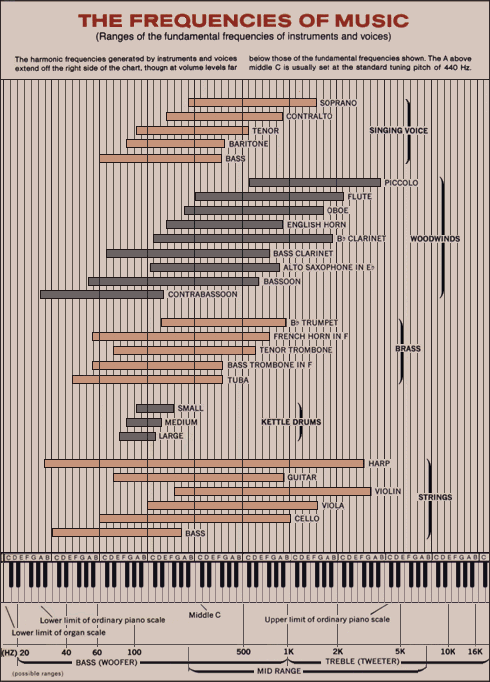
2. Acoustic treatments can vastly improve sound quality. While this area can quickly become quite complicated (and controversial), for most users these treatments take the form of absorption panels. To improve stereo imaging these panels are placed at reflection points on the walls and ceiling between listener and speakers. Somewhat more difficult is to significantly improve bass response with bass traps, which are typically larger absorption panels placed in corners.
- Info: Ethan Winer, Crutchfield
- Manufacturers: GIK, Real Traps, ATS
3. Speaker positioning should be a prime consideration for all critical listeners. While few enthusiasts are lucky enough to have dedicated listening rooms of ideal dimensions, substantial improvement to sound quality can be achieved by placing speakers as closely as possible to what is recommended by experts.
- How to Set up a Listening Room by Ethan Winer
- Speaker Placement for HT @ Crutchfield
- Speaker Placement Tips @ Audioholics
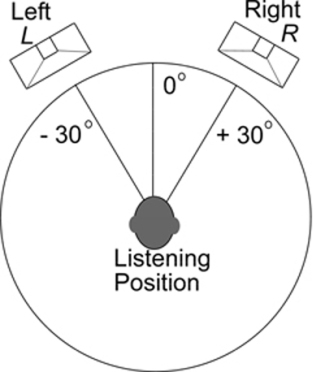
4. All speakers possess their own unique sonic characteristics, which interact with a room to define what a listener hears from a given recording. A few of the issues to consider when deciding which speaker to buy:
- Science indicates that most listeners prefer on and off accuracy, so look for these frequency response measurements. (Watch Dr. Floyd Toole’s essential talk about sound reproduction.)
- In-room listening is highly desirable when evaluating a given loudspeaker.
- In-room listening may in fact be easier with internet direct manufacturers, as many provide excellent (often free) return policies. These ID manufacturers may provide a greater value compared to what is available at brick and mortar stores at large mark ups.
- Another valid perspective is that some larger companies may offer a better value since they have larger engineering budgets and can hit lower prices due to their products being mass produced using cheap labor.
- Never, ever assume that because a speaker is more expensive that there is a corresponding increase in sound quality. Most speakers marketed as audiophile luxury items may look prettier, but oftentimes this is all one is paying for. Many are even quantifiably less accurate that cheaper speakers.
- Most users should consider a bookshelf + subwoofer over so-called full-range loudspeakers.
- There are sound quality advantages to self-powered monitor speakers, though many users will find these less convenient since each speaker needs a power supply and to be turned on individually.
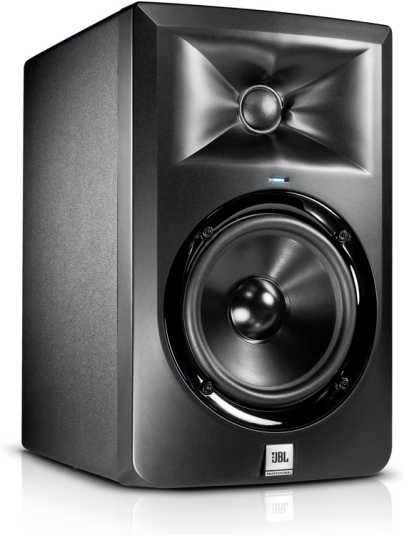
5. It should never be assumed that audiophile amplifiers, whether integrated or monoblock, improve sound quality over modern AVRs available for a fraction of the price. Conversely, these AVRs can actually improve sound quality, not only because they are the correct tool for integrating a subwoofer but because the digital room correction software can create improvements in less-than-perfect rooms (i.e. all non-dedicated listening rooms). This software uses a measurement microphone to gain information about a room/speaker response at multiple locations. While this digital signal processing should never be seen as substitute for room treatments, improvement to sound quality can nevertheless be had (if more on the level of fine tuning). These programs are becoming more sophisticated and affordable with each passing year.
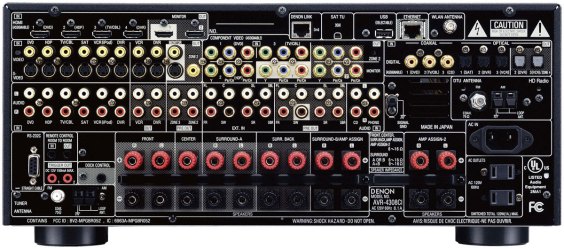
6. Room EQ Wizard is a free program used with a < $100 calibration microphone connected via USB cable to a laptop. The enthusiast (or engineer) can then create graphs of the frequency response and bass decay amongst other sophisticated measurements. These measurements are highly useful for determining subwoofer placement as well as the effectiveness of acoustic panels.
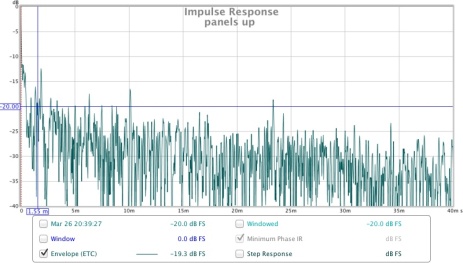
7. Multiple subwoofers can be used to achieve flatter frequency response (more accuracy), especially across multiple listening positions. Two subwoofers will typically offer a substantial improvement over one in most spaces, but going beyond four is generally unnecessary.
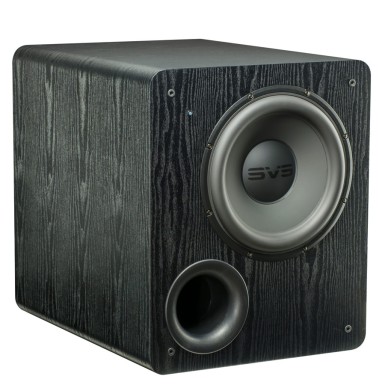
8. Dynamic equalization is a feature found on most modern receivers that adjusts volume of higher and lower frequencies to account for how we perceive sound. It functions somewhat like a more sophisticated “loudness” button found on older receivers. As volume is turned down from the reference volume film/music is mixed at (usually quite loud), the highest and lowest frequencies are dynamically turned up to account for the way our ears/brains perceive sound.
SEE ALSO:
Filed under: Uncategorized | 6 Comments
…Or What I Wish I’d Known Before Ever Setting Foot in a Hi-fi Store
The following is my attempt to succinctly describe what audio skeptics believe about basic issues related to sound quality and consumer audio equipment. This may seem inconsequential to some, but then again music itself may seem inconsequential to some. Rather than focus on my own opinions—which matter little—I am trying to objectively describe what knowledgeable audio professionals and engineers of a skeptical—or just plain scientific—mindset believe about these issues.
I’ve come to understand that much of what is purported as truth in the audio industry is as objectively false as the alleged facts used to peddle most vitamins, new age mysticism, and cuckoo conspiracy theories. I find it baffling how much useless information there is online about audio issues, much of it written by professional writers or even recording engineers. (To paraphrase audio expert Ethan Winer, being a recording engineer is nothing like being virtually any other kinds of engineer, who might be responsible for, say, designing an airplane to carry hundreds of people over an ocean. Perfectly competent recording engineers often possess a minimal amount of education and may be wholly ignorant of the deeper science involved with what they do.)
To me, an “audio skeptic” is roughly synonymous with an “audio objectivist.” An “audio objectivist” believes that controlled experiment (e.g. double blind) offers the only effective method for getting around confirmation bias (similar to the placebo effect). This understanding can create doubt about most of what is written about audio products even by professionals. Unfortunately, it can also make one come across as rather arrogant, especially when interacting with individuals who adamantly insist that upgrading to an exotic brand of audio cable did, well, anything at all. Skeptics tend to favor legitimate science—with published studies and peer review—and distrust junk science. Skeptics debunk—sometimes gleefully—and in the audio world, there’s no shortage of easy targets. (Here and here are overviews of the subjectivist vs. objectivist holy war. Here and here are lists of double blind audio tests.)
But dude, how are a bunch of eggheads going to tell ME what sounds good to MY ears? This is a valid point, and of course everyone has preferences about what sounds good, and there are many areas where experts vehemently disagree. However, the assertions made here have nothing to do with preferences. No one legitimately prefers the sound of a one speaker cable to another, because barring some gross defect, those cables do not have their own sonic signature. The harsh truth is that when someone pays thousands of dollars for a speaker cable and then hears an “obvious” sonic improvement, they are deluding themselves, which can be easily demonstrated under bias-controlled conditions and also deduced using the laws of physics.
My audience is someone like myself a few years ago first getting into this stuff and ignorant about all issues or controversies related to audio. I’d long ago worked out how I felt about homeopathy or astrology, but I was clueless at how skepticism might relate to audio issues. Perhaps if I’d read something like this it would have prevented a few expensive detours.
Again, these ideas don’t come from me. I am attempting to distill what the majority of credible professionals think about audio issues. I believe that most individuals of a skeptical mindset who get into this stuff will come to all the following conclusions:
1. Exotic cables, interconnects, or power cords don’t make your system sound better. Not even a little bit. And bi-wiring simply doesn’t make sense.
- “Seven different songs were played, each time heard with the speaker hooked up to Monster Cables, and the other time, hooked up to coat hanger wire. Nobody could determine which was the Monster Cable and which was the coat hanger.” – Do Coat Hangers Sound As Good Monster Cables? @ Cosumerist
- “We will find that every topic Pear claims is important to cable design has been debunked as nonexistent, inaudible, or insignificant at audio frequencies. Coupled with the fact that exotic cable designs are not used by the professional broadcast and recording studios that produce the recordings in the first place, this non-issue of cables is further diminished in significance.” – Pear Cable Redux: How to Combat Scam with Science @ Audioholics
- “I believe pseudoscience dominates and drives much of what goes in in the hi-fi industry. Here I say that audiophile cable companies are reliant on pseudoscience to sell their products and as such are conning their customers.” – Pseudoscience and the audiophile @ The Skeptics Society Forum
- “Pointing out the absurd review by audiophile Dave Clark, who called the cables ‘danceable,’ Randi called it ‘hilarious and preposterous.’ He added that if the cables could do what their makers claimed, ‘they would be paranormal.’” – James Randi Offers $1 Million If Audiophiles Can Prove $7250 Speaker Cables Are Better @ Gizmodo
- “When confronted with the truth, believers do not want to hear about it. They want to remain in the magical world of fantasy where they think they can hear improvements in their wire, often arrived at by making listening tests without adequate controls or understanding of the problems involved including speaker impedance and amplifier stability.” – Speaker Wire: A History by Roger Russell
- “To justify claims of enhanced audio quality, many marketers of high-end speaker cables cite electrical properties such as skin effect, characteristic impedance or resonance; properties which are generally little understood by consumers. None of these have any measurable effect at audio frequencies.” – Speaker Wire @ Wikipedia
- “Because there are often very little measurable and audible differences between cables, many of the exotic cable vendors use psuedo junk science to differentiate their products from their competitors.” – Top Ten Signs an Audio Cable Vendor is Selling You Snake Oil @ Audioholics
- “In some cases wire can affect high frequencies passing through it, and connector tarnish or bad soldering can cause distortion. But usually when people believe they hear differences with cables it’s due to improper testing. Everything about wire has been known fully for at least 100 years!” – Sounding Off: Wire @ Sound On Sound Sounding Off: Wire @ Sound On Sound
- “In summary, I can say with assurance that sonic differences between speaker wire exist in the mind of the listener, not in the ‘sound’ of the cable.” – Wired Wisdom by Tom Nousaine
2. It is unlikely that expensive CD players or DACs improve sound quality. Many of the claims these manufacturers make do not stand up to scientific scrutiny.
- “A great deal of money has been made by shrewd marketeers preying on the fears of the consumer worried about jitter. Such products marketed include disc stabilizer rings to reduce rotational variations, highly damped rubber feet for the players, and other snake oil remedies.” – A Fundamental Introduction to the Compact Disc Player by Grant Erickson
- “Some audiophile manufactures making jitter reduction claims are likely just touting the features built into whatever chip(s) they’re using and going off the datasheet for the part(s). Some, I know for a fact, don’t even have equipment to even properly measure jitter.” – Jitter Does it Matter? @ NwAvGuy
- “Virtually all of the after-market tweaks and expensive mods are aimed at wealthy gullible audiophiles who are easily persuaded to part with their money. Of course, lacking any proper blind A/B comparisons, if they’ve paid lots, they’ll hear a difference.” – Does Digital Jitter Matter? @ eCoustics
- “Every low-distortion electronic signal path sounds like every other. The equipment reviewers who hear differences in soundstaging, front-to-back depth, image height, separation of instruments, etc., etc., between this and that preamplifier, CD player, or power amplifier are totally delusional. Such differences belong strictly to the domain of loudspeakers.” – Electronic Signal Paths Do Not Have a Personality! @ The Audio Critic
- “With modern digital devices jitter is typically 110 to 120 dB below the music, even for inexpensive consumer-grade gear. In my experience that is far too soft to be audible.” – Artifact Audibility Comparisons @ Ethan Winer
- “‘With music,’ the report asserts, ‘the numbers indicate that the scores were not significant, and it is difficult to imagine a real-life situation in which audible differences could be reliably detected or in which one player would be consistently preferred to another for its sound alone.” – Expert Ears Take a Test to Resolve the Great CD Debate @ The New York Times
- “Apple has more smart people and more resources than any other audio company on the planet, so as we see when it comes to audio engineering, the iPhone easily outdoes many so-called “audiophile” products. For enjoying music, you will probably get poorer performance if you waste your time and money with outboard DACs or headphone amplifiers; the iPhone already has the best there is. Why do commercial audio magazines tout external DACs and amplifiers? Because that what their advertisers are trying to sell!” – iPhone 6S Plus Audio Quality @ Ken Rockwell
3. Under normal conditions, virtually all audio amplifiers/receivers sound the same (sans EQ). They do not have their own sonic signature that must be carefully paired with speakers.
- “They may sound different if they are used at high volume levels as they approach the limits of their output ratings, when the amplifiers’ distortion is rising and nearing the clipping point. However, if two different transistor amplifiers have the same smooth, linear frequency response, low distortion, and are operated within their output ratings, then they will tend to sound identical until they are called upon to produce great quantities of clean, unclipped power.” – 10 Things about Audio Amplifiers You’ve Always Wanted to Know @ Audioholics
- “Then I started to hear about some convincing blind tests and finally conducted my own. I was stunned at the results. I couldn’t tell a $300 amp from a $3000 in the store I was working at. Neither could anyone else who worked there. It was a major blow to my audio belief system.” – Blind Listening Tests & Amplifiers @ DIY Audio forums
- “His challenge is an offer of $10,000 of his own money to anyone who could identify which of two amplifiers was which, by listening only, under a set of rules that he conceived to make sure they both measure ‘good enough’ and are set up the same. Reports are that thousands of people have taken the test, and none has passed the test. Nobody has been able to show an audible difference between two amps under the test rules.” – Richard Clark $10,000 Amplifier Challenge FAQ by Tom Morrow
- “Any amplifier, regardless of topology, can be treated as a ‘black box’ for the purpose of listening comparisons. If amplifiers A and B both have flat frequency response, low noise floor, reasonably low distortion, high input impedance, low output impedance, and are not clipped, they will be indistinguishable in sound at matched levels no matter what’s inside them.” – Obsession with Amplifiers @ The Audio Critic
- “The loudspeaker will determine how your music system sounds. Not the amplifier, not the preamplifier, not the CD or DVD player, nothing but the loudspeaker. Speakers, even the finest, are far less accurate in terms of output compared to input than any of those other components. The speaker will be invariably the weakest link in the chain, the link that limits the quality of sound reproduction.” – A Note About Loudspeakers @ The Audio Critic
- “But for now, the evidence would seem to suggest that distinctive amplifier sounds, if they exist at all, are so minute that they form a poor basis for choosing one amplifier over another. Certainly there are still differences between amps, but we are unlikely to hear them.” – Do All Amplifiers Sound the Same? @ Stereo Review
- “No one has ever produced a scientifically controlled listening test showing that well-designed amplifiers (flat frequency response, no clipping), preamplifiers, integrated circuits, and speaker wires (16-guage and bigger) have the slightest effect on the sound being produced.” – Can You Trust Your Ears? by Tom Nousaine
- “An apparently insurmountable objection to the existence of non-measurable amplifier quirks is that recorded sound of almost any pedigree has passed through a complex mixing console at least once; prominent parts like vocals or lead guitar will almost certainly have passed through at least twice, once for recording and once at mix-down. More significantly, it must have passed through the potential quality-bottleneck of an analogue tape machine or more likely the A-D converters of digital equipment. In its long path from here to ear the audio passes through at least a hundred op-amps, dozens of connectors and several hundred meters of ordinary screened cable. If mystical degradations can occur, it defies reason to insist that those introduced by the last 1% of the path are the critical ones.” – Science and Subjectivism in Audio by Douglas Self
- “Now that I have mentioned these various types of distortion, I think it’s safe to say a well designed amplifier will reduce these effects to the point of inaudibility. Because of this, and because of the conclusions from blind listening tests, it’s not clear why some people hear differences in how amplifiers sound.” – Amplifier FAQ @ AVSForum
4. “Burn in” factor—the idea that speakers or electronics sound better after X hours of use—is likely a delusion. Though slight measurable differences may occur with speakers, far more likely is that perceived change is the brain acclimating to speaker.
- “Capacitors polarize within seconds of applying voltage. Beyond that, I dare them to explain what will change in an opamp, cable or PCB as the result of applied voltage and signal. Rubbish.” – Audio Myths & Marketing Tricks: Burn In @ ColdCraft
- “Running your components and cables for some arbitrary length of time when they are first purchased isn’t helpful.” – The Mythical Burn-In Period @ eCoustics
- “In this article we’ll look at a typical electrodynamic driver’s operation as seen largely from the mechanical side, with a view to assessing the validity of various claims frequently made regarding driver break in. We’ll also see why it’s in a manufacturer’s best interest to ensure their products are broken in long before leaving the factory warehouse and how that bears on subsequent attempts at burning a driver in.” – Speaker Break In: Fact or Fiction? @ Audioholics
- “Our audio memory is notoriously short, and it is simply impossible to hear a change that takes weeks to occur. What really happens is that we become ‘acclimatised’ to the sound – there is rarely any significant change at all. This is doubly true of cables – there isn’t any reason whatsoever to break-in an interconnect or speaker cable, because they don’t change enough to create a measurable change, let alone one that’s audible.” – Audio Myths by Rod Elliott
5. Expensive vacuum tube electronics may add “character” (i.e. distortion) to your system, but if clarity (less distortion) and reliability is what you’re after, stick with transistors.
- “As a general rule, tubes for mainstream audio folks are not inherently bad (though perhaps a bit high-maintenance). However, while tubes are very popular in guitar and other instrument amplifiers due to their unique sound (even-harmonic distortion resulting from asymmetric soft clipping), they are unnecessary in playback amplifiers. Skeptics of tube amplifiers argue that audiophiles prefer the inherent distortion provided in the antiquated technology while paradoxically claiming the sound is purer and more perfect.” – Audio Woo @ Rational Wiki
- “Where do vacuum tubes come in? Nowhere, unless you are a tweako cultist. There is nothing in audio electronics that cannot be done better with solid-state devices than vacuum tubes…. Yes, there exists some very nice tube equipment, but the solid-state stuff is better, cheaper, and more reliable.” – Paste This in Your Hat! (What Every Audiophile Should Know and Never Forget) @ Audio Critic
- “Even if you prefer the sound of tubes, please understand they simply cannot restore any quality that was lost earlier in the recording process. All a tube preamp can do is add an effect that you may find pleasing. Studio monitor amplifiers should never have a “sound;” if they do, they are in error. Tube circuits can affect the sound in a way that is similar to analog tape recorders, and you may in fact find that pleasing.” – Dispelling Popular Audio Myths by Ethan Winer
- “Purely audio considerations aside, many audiophiles prefer the aesthetics of a ‘warm,’ artistically designed (perhaps handcrafted) amplifier over the usual ‘high-tech’ appearance of most solid-state amplifiers. And many of us enjoy the ‘legacy’ feel of the equipment setup when operating vacuum tubes are visible. These are valid reasons to buy hollow-state equipment, if it appeals to you.” – Differences in Amp Sound: What’s the Truth? @ audioeXpress
6. The look and feel of CDs or computers can’t compete with vinyl, which can sound amazing for what it is. But there is no music lost “between the bits.” High quality digital formats are sonically superior to vinyl in every measurable way.
- “There is no technical proof of the sonic superiority of the vinyl medium compared to CD. One vinyl record may sound better than its equivalent CD for extremely specific reasons. That does not mean the medium as a whole is superior…. There is nothing wrong with preferring vinyl to CDs, as long as the preference is honestly stated on emotional terms, or is precisely quantified and tied to subjective experience, and not obscured with (fallacious) technical appeals.” – Myths (Vinyl) @ Hydrogen Audio Wiki
- “The most ludicrous manifestation of the anti-digital fallacy is the preference for the obsolete LP over the CD. Not the analog master tape over the digital master tape, which remains a semi- respectable controversy, but the clicks, crackles and pops of the vinyl over the digital data bits’ background silence, which is a perverse rejection of reality.” – 10 Biggest Lies in Audio @ The Audio Critic
- “I grew up listening to records up until about ’85, when the CD was already out. And I was involved in testing loudspeakers up at the National Research Council in Canada…. It was quite apparent that the amount of distortion coming out of these devices was very high compared to CD. So what we found was that vinyl was a limiting factor in our ability to do accurate and reliable listening tests on loudspeakers.” – Why Vinyl Sounds Better Than CD, Or Not @ Talk of the Nation / Science Friday
- “There’s no question that LPs and tubes sound different from CDs and solid state gear. But are they better? Not in any way you could possibly measure. Common to both is much higher distortion; LPs in particular have more inherent noise and a poorer high frequency response, especially when playing the inner grooves. I’m convinced that some people prefer tubes and vinyl because the subtle distortion they add sounds pleasing to them…. But clearly this is an effect, not higher fidelity.” – Audiophoolery by Ethan Winer
- “Let’s not fool ourselves, though. Vinyl is great, but the idea that its sound quality is superior to that of uncompressed digital recordings is preposterous.” – Vinyl’s great, but it’s not better than CDs @ Vox
- “Hey, if you prefer the sound of vinyl that’s great. However that subjective judgment shouldn’t be confused with the objective facts, which show that CD/digital does a far more accurate job of reproducing the original musical signal.” – Vinyl vs. CD myths refuse to die @ Electrical Engineering Times
- “I’d wager that there is not one single recording engineer at the peak of his powers in the late 50s who would not have sold his very soul to the devil at that time to get his hands on digital technology. He, and the performers, would have struggled against the chronic limitations of the technology, and we today would have a far richer and more faithful legacy had we jumped directly from 78 shellac to digital. And now those great artistes have departed the stage, and all we have is a shadow of their magnificence.” – Vinyl vs. CD – Harbeth’s owner Alan A. Shaw Compares @ YouTube
- “Of vinyl’s inherent deficiencies, reproducing bass is one of its most glaring. The other is that the last track on each side of a record sounds worse than the first, due to the fact that the player’s stylus covers fewer inches of grooves per second as it gets closer to the center.” – Why CDs May Actually Sound Better Than Vinyl @ LA Weekly
- “But here’s the reason why the entire debate is stupid: whether the music is stored on vinyl or a CD is just not that important a part of the overall system. It’s like deciding which of two different cars is best by comparing their spark plug wires. There are many, many variables in the process of playing recorded music that noticeably affect the sound, from the microphones, to the mixing, to the mastering, to the quality of the playback hardware, the amplifier, and (far and away most important) the quality of the speakers and characteristics of the listening room; whether the recording was vinyl or CD is simply not one of these important variables, with apologies to the zealots.” – Are Vinyl Recordings Better than Digital? @ Skeptoid
- “Most people, when discussing vinyl, talk about an “analog sound,” saying that vinyl sounds “warmer” or “richer” than digital. It does; because there is less frequency response (poorer reproduction of high frequencies), and more distortion. Just as tube amps may sound “better” because of the distortion they introduce into playback, the same is true for vinyl. That “warmth” you hear is simply the poor quality of the playback; the distortion caused by the analog chain, and its lack of detail.” – Do Vinyl Records Sound Better than CDs? (Spoiler: Nope)
- “The fundamental cause of inner-groove distortion is the progressive reduction of linear resolution as a record progresses. Put another way: there is more vinyl per second available at the large-diameter beginning of the record than exist at the smaller-diameter toward the end of each side. Subsequently, the wavelengths become gradually shorter and more compressed (like an accordion) as you get closer to the records centre. These more condensed grooves are much harder for the stylus to track accurately.” – Vinyl Record Inner-Groove Distortion @ Sound Matters
- “CDs reflect exactly what the artists recorded in the studio. Vinyl distorts it. Some listeners honestly feel that the defects vinyl introduces somehow make it more attractive or ‘warmer.’ But from any objective standpoint, there’s no justification in calling the sound of vinyl records ‘better.” – Does Music Sound Better on Vinyl or CD? @ Phys.org
7. “Audiophile” hi-res audio formats are not likely to offer audible improvements over compact disc 16 bit/44.1 kHz quality.
- “Why push back against 24/192? Because it’s a solution to a problem that doesn’t exist, a business model based on willful ignorance and scamming people. The more that pseudoscience goes unchecked in the world at large, the harder it is for truth to overcome truthiness… even if this is a small and relatively insignificant example.” – 24/192 Music Downloads (…and why they make no sense) @ xiph.org (See also Monty Mongomery’s superb videos explaining digital audio.)
- “The authors report on a series of double-blind tests comparing the analog output of high-resolution players playing high-resolution recordings with the same signal passed through a 16-bit/44.1-kHz “bottleneck.” The tests were conducted for over a year using different systems and a variety of subjects. The systems included expensive professional monitors and one high-end system with electrostatic loudspeakers and expensive components and cables. The subjects included professional recording engineers, students in a university recording program, and dedicated audiophiles. The test results show that the CD-quality A/D/A loop was undetectable at normal-to-loud listening levels, by any of the subjects, on any of the playback systems.” – Audibility of a CD-Standard A/DA/A Loop Inserted into High-Resolution Audio Playback @ Audio Engineering Society (full text here)
- “The Meyer/Moran test is persuasive, but I am open to the idea that some further research may prove it to be not the last word on the transparency of 16/44. Still, I’d expect the audible differences between 16/44 and higher resolutions to be subtle at best, and I am sceptical of any claims otherwise.” – Is high-resolution audio (like SACD) audibly better than CD? by Tim Anderson
- “The CD-quality standard—which Young and HRA proponents say isn’t sufficient—wasn’t adopted randomly. It’s not a number plucked out of thin air. It’s based on sampling theory and the actual limits of human hearing. To the human ear, audio sampled above 44.1 kHz/16-bit is inaudibly different.” – Don’t Buy What Neil Young is Selling @ Gizmodo
- “Please note that this is not just a disagreement with the cloud-cuckoo-land tweako audiophiles but also with the highest engineering authorities, such as the formidable J. Robert Stuart of England’s Meridian Audio and others with similar credentials. That the Meyer-Moran tests leave no room for continued disagreements is an occasion for the most delicious Schadenfreude on the part of electronic soundalike advocates like yours truly. I stated my suspicions that SACD was no improvement over CD seven years ago, in my review of the first Sony SACD player.” – Proven: Good Old Redbook CD Sounds the Same as the Hi-Rez Formats @ The Audio Critic
- “In theory, rates around 44.1kHz or 48kHz should be a near-perfect for recording and playing back music. Unless the Nyquist Theorem is ever disproved, it stands that any increase in sample rates cannot increase fidelity within the audible spectrum. At all. Extra data points yield no improvement.” – The Science of Sample Rates (When Higher Is Better — And When It Isn’t) @ Trust Me I’m a Scientist
- “Much of digital audio comes down to math. You take the sampling rate and divide it by two and that is the highest possible frequency that can be recorded (so 44.1 khz, the standard for CD audio, can go up to 22,000 hz—most adults can hear little above 15,000 hz or so). From the bit depth, you can calculate the theoretical limits of the dynamic range.” – The Myth and Reality of the $43 Download @ Pitchfork
- “Last month, we issued “The Golden Ear Challenge”: Our promise to write a glowing, feature-length article about whoever becomes the first person on record to show he or she can reliably hear an improvement offered by any super-high-resolution file format under properly controlled conditions. So far, this prize remains unclaimed.” – Update on “The Golden Ear Challenge”: Who Will Conquer Audio Mount Everest? @ Trust Me I’m a Scientist
- “Without going too deeply into the sampling theory behind how they came up with those numbers, suffice it to say that to human ears 44.1/16 audio is mathematically perfect sound reproduction. The frequencies and dynamics that lie beyond might be there—but we cannot hear them.” – What is High-Resolution Audio? @ Gizmodo
- “Many tests over the years have concluded that nobody can reliably identify CD-quality versus higher resolutions, yet some people still believe that HD audio sounds better, with more realism and clarity. This belief is driven by two myths: 1) ultrasonic freqencies can affect frequencies we do hear, and 2) having 24 bits affords more resolution than 16 bits because there are more vertical “steps” between each sample’s volume level.” – High Definition Audio Comparison @ Ethan Winer
- “Yet high-resolution audio files at 96 kHz can reproduce sounds up to around 48,000 Hz. Dogs can hear sounds that high; but not humans. In fact, it’s very likely that your stereo system cannot reproduce sounds at such levels.” – Why High Resolution Music is a Marketing Ploy @ Kirkville
See also my article on what DOES make a difference in audio: A Brief Guide to Audio for the Skeptical Consumer: Part II
Filed under: Uncategorized | 122 Comments